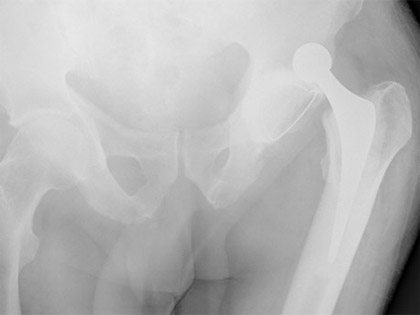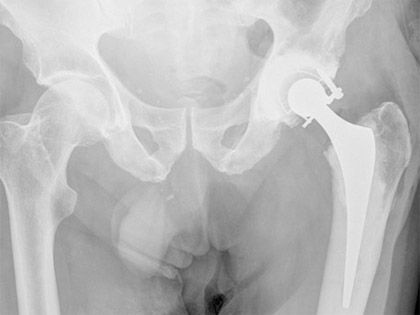DislocationDislocation is a process where the ball joint comes out of the socket. It is more likely to occur in the first 12 weeks following surgery before the deep tissues are fully healed. The incidence of dislocation does vary but in most large series it is in the region of 4 per cent although dislocation rates approaching 1 per cent or less are possible. Dislocation tends to occur suddenly either after bending or stretching too far or after a fall. Common mechanisms that can cause dislocation are attempts to bend down and put shoes and socks on and possibly getting up from low seating. The mechanism therefore is normally of hip flexion and in most dislocations but not all the femoral head comes out at the back. It is fairly common practice to simply reduce the dislocation under general anaesthetic but occasionally the hip can continue to dislocate and if it dislocates on more than three occasions then further operation to stabilise the hip is often considered but this decision does vary from patient to patient depending on other features. Another method of treating the dislocation either at the first or second occasion is to apply a hip brace to try and stabilise the hip. X-Ray showing a dislocated hip replacement. 
X-Ray showing the same hip but now reduced with a posterior lip augmentation device (PLAD) attached to the socket to prevent further dislocation. 
|